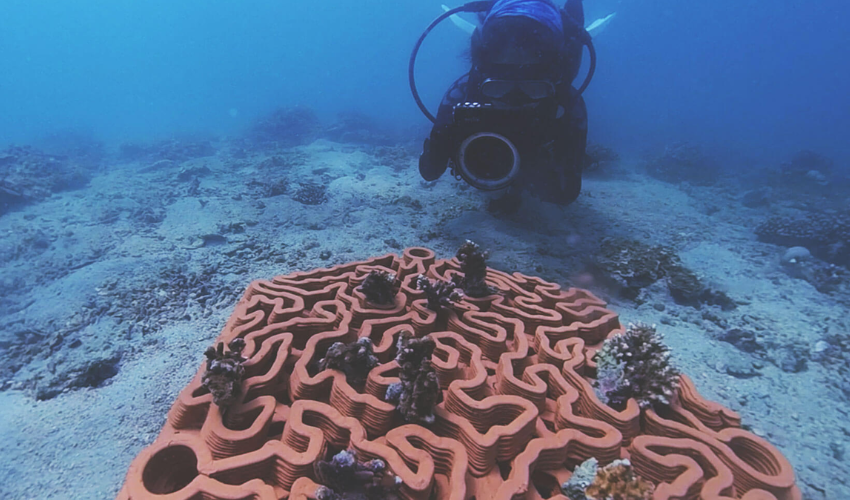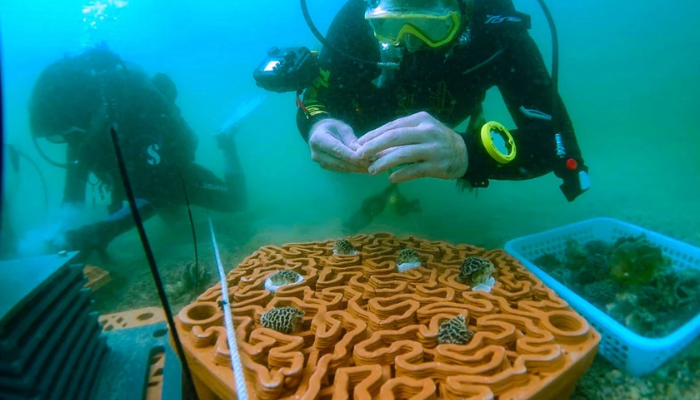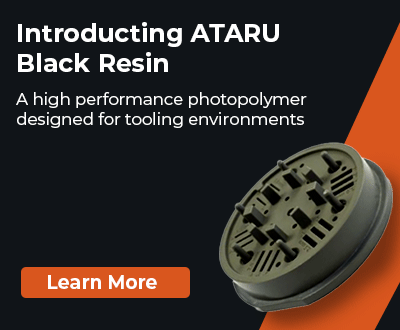Abu Dhabi Partners with Archireef to Use 3D Printing for Coral Reef Restoration

The United Arab Emirates recently announced an exciting partnership that embraces cutting-edge 3D printing technology to help protect the country’s fragile marine ecosystem. The UAE is home to the largest coral reef in the region, called the Ras Ghanadah protected area. The wildlife area spans nearly 55 square kilometers and contains 7.1 square kilometers of coral. The city government signed a memorandum of understanding with Archireef, a climate technology company specializing in nature-based solutions to help restore coral reefs and enhance coastal biodiversity across the country. This marks one of the most ambitious efforts within the region to merge additive manufacturing with large-scale environmental restoration.
The partnership was officially formalized during the 2025 World Conservation Congress in Abu Dhabi. At its core, the agreement serves as a shared vision to help rehabilitate coral habitats through advanced engineering and sustainable materials. Archireef, in particular, utilizes 3D printed terracotta reef tiles to help replenish lost coral due to global warming and other factors. These tiles will play a central role in the effort and are designed to mimic natural coral structures. Given its organic material composition, the tiles themselves will create a stable and healthy environment for new coral fragments to grow.

A photo from the signing of the memorandum between Archireef and the Environmental Agency of Abu Dhabi during the 2025 World Conservation Congress. (Photo Credit: Environmental Agency Abu Dhabi)
Archireef’s reef tiles are produced using 3D printing technology that allows for precise, biomimetic shapes inspired by natural coral formations. They are made from non-toxic terracotta clay and offer an eco-friendly alternative to conventional artificial reef materials. Their unique geometry prevents them from sinking into the seabed and provides the stability needed to support marine life. With a coral survival rate of around 95 percent, the tiles have already outperformed traditional restoration methods in pilot projects across the Middle East.
By integrating this innovative technology with the Environment Agency’s expertise in marine conservation, the partnership aims to strengthen the resilience of Abu Dhabi’s coral reefs in the face of climate change. The approach reflects a growing global shift toward merging advanced manufacturing with ecological restoration, offering a scalable model for other coastal regions.

The biomimicry layer sits on top of 3D printed legs that prevent the tiles from sinking into sand. (Photo Credit: Archireef)
This collaboration positions Abu Dhabi as a leader in using modern tools to address environmental challenges while honoring its maritime heritage. It demonstrates how emerging technologies like 3D printing can move beyond industrial applications to play a vital role in ecological preservation and climate adaptation.
Climate change continues to pose a serious threat not just to Abu Dhabi, but coral reefs worldwide. Rising sea temperatures, stronger storms, and recent ocean acidification continue to cause harm to reefs. Scientists have estimated that since the 1950s, about 50 percent of the world’s coral reefs have died. Partnerships like this highlight how technology and local expertise can work together to build resilience. By pairing 3D printing with targeted restoration strategies, they provide a model for how coastal communities can adapt to a warming planet.

Archireef previously used their 3D terracotta tiles to help restore coral in Hong Kong. (Photo Credit: Archireef)
What are your thoughts on this recent partnership? How do you see 3D printing or additive manufacturing helping solve issues related to climate change? Let us know in a comment below or on our LinkedIn or Facebook pages! Plus, don’t forget to sign up for our free weekly Newsletter to get the latest 3D printing news straight to your inbox. You can also find all our videos on our YouTube channel.
*Cover Photo Credits: Archireef








It really cements Abu Dhabi’s position as a leader, demonstrating that 3D printing has a vital role to play in saving our natural world as well as for industry.